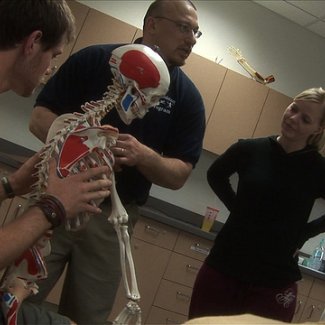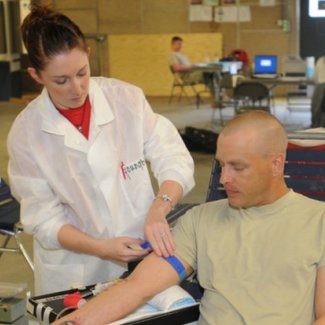
It takes at least 2 to 3 years to become a bona fide Certified Respiratory Therapist (CRT), including at least two years of postsecondary training to get ready for professional certification and state licensure. Additionally, graduates will spend additional months qualifying and applying for certification and licensure.
Becoming a Respiratory Therapist
Respiratory Therapy School
To work as a licensed and certified respiratory therapist in the U.S., it is necessary to earn at least a 2-year associate’s degree from a program accredited by the Commission on Accreditation for Respiratory Care (CARC). Accredited programs are offered in a variety of institutions, from community and vocational schools to universities, the military and hospitals. Students learn the basic theories and techniques of modern pulmonary care, taking classes in human anatomy and physiology, pharmacology, college-level math, and biochemistry.
Applicants may need to pass a background check before they can get into respiratory therapy school and work directly with patients. Good prerequisite classes to take in high school include sciences like biology, chemistry, and physics. CPR certification may be an admission requirement, but even if it isn’t, it will probably be necessary for state licensing later on.
A 4-year bachelor’s degree is not required to be a respiratory therapist, but many have one anyway. Respiratory therapy students earn bachelor’s degrees to be more competitive. Some do it to receive sequential CRT and advanced RRT training in the same 4-year program. These students can apply to take the RRT Written and Clinical Simulation tests immediately after passing the CRT exam.
Certification and Licensure
The national CRT certification is considered the primary entry-level credentialing benchmark for state licensing purposes. The qualifying examination for Certified Respiratory Therapists (CRTs) is administered by the National Board for Respiratory Care (NBRC). Having a CRT credential satisfies one of the core licensing requirements for RTs in 48 of the 50 states. An education at least to the associate’s level is also a core requirement.
CRT-qualified graduates can demonstrate their advanced competency by passing the Registered Respiratory Therapist (RRT) examination, also offered by the NBRC. Although some employers have failed to differentiate between the CRT and RRT credentials, the RRT is an advanced practice designation. It is useful, for example, for promoting to a managerial position or educator’s job. RRTs may be paid more. Additionally, respiratory therapists can pursue specialty credentials like the Registered Pulmonary Function Technician and Certified Pulmonary Function Technician.
National certification is necessary but not sufficient to practice as a respiratory therapist. Certificate holders also need to apply for a license to be legally employable. The CRT credential is recognized by every state but Alaska, facilitating the licensure process. Most graduates apply for a state license after passing the board exam for CRT certification. Note that in some states, students should begin the application process before they graduate from a training program.












Leave a Reply